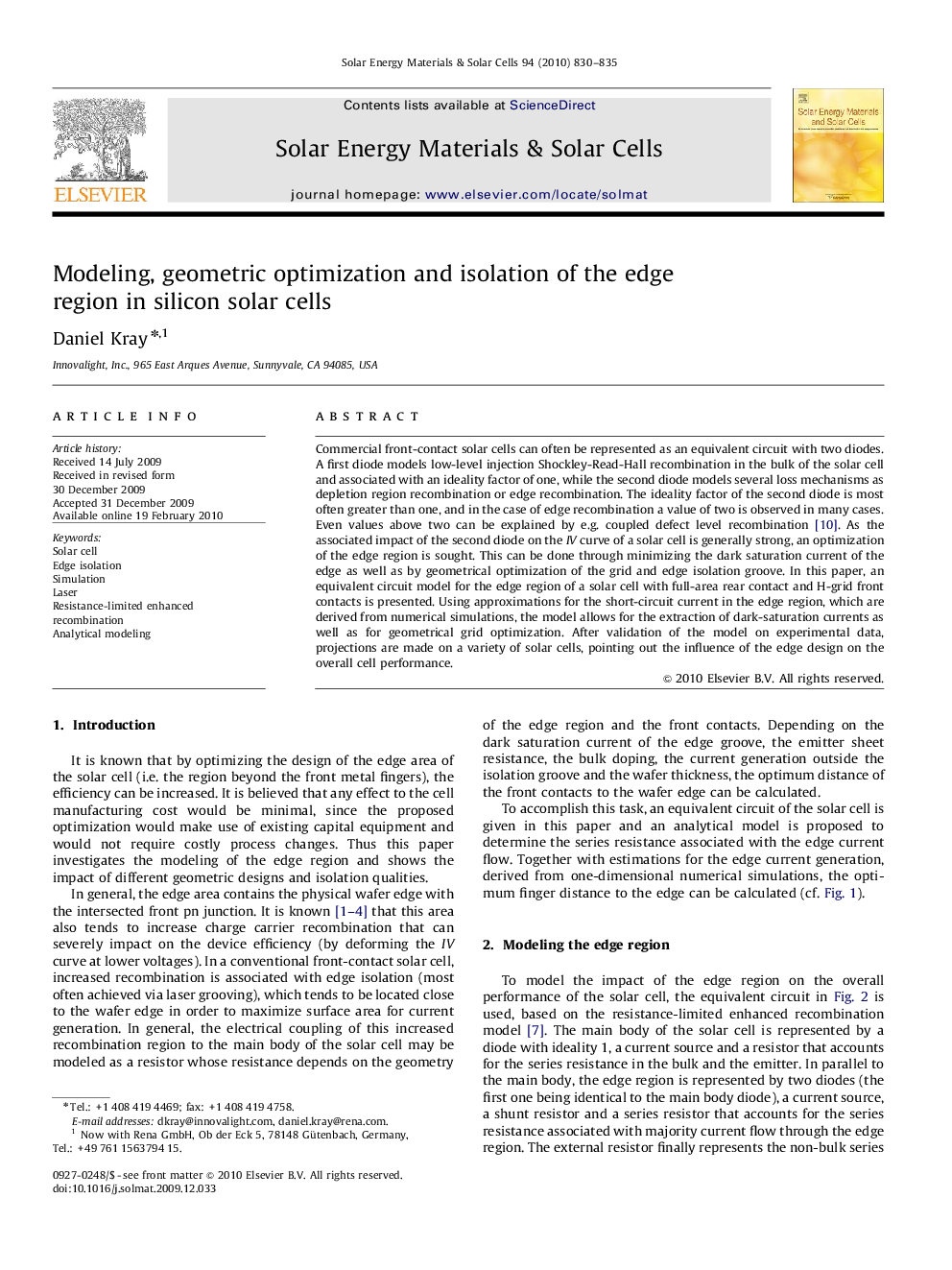| Article ID | Journal | Published Year | Pages | File Type |
|---|---|---|---|---|
| 80099 | Solar Energy Materials and Solar Cells | 2010 | 6 Pages |
Commercial front-contact solar cells can often be represented as an equivalent circuit with two diodes. A first diode models low-level injection Shockley-Read-Hall recombination in the bulk of the solar cell and associated with an ideality factor of one, while the second diode models several loss mechanisms as depletion region recombination or edge recombination. The ideality factor of the second diode is most often greater than one, and in the case of edge recombination a value of two is observed in many cases. Even values above two can be explained by e.g. coupled defect level recombination [10]. As the associated impact of the second diode on the IV curve of a solar cell is generally strong, an optimization of the edge region is sought. This can be done through minimizing the dark saturation current of the edge as well as by geometrical optimization of the grid and edge isolation groove. In this paper, an equivalent circuit model for the edge region of a solar cell with full-area rear contact and H-grid front contacts is presented. Using approximations for the short-circuit current in the edge region, which are derived from numerical simulations, the model allows for the extraction of dark-saturation currents as well as for geometrical grid optimization. After validation of the model on experimental data, projections are made on a variety of solar cells, pointing out the influence of the edge design on the overall cell performance.
